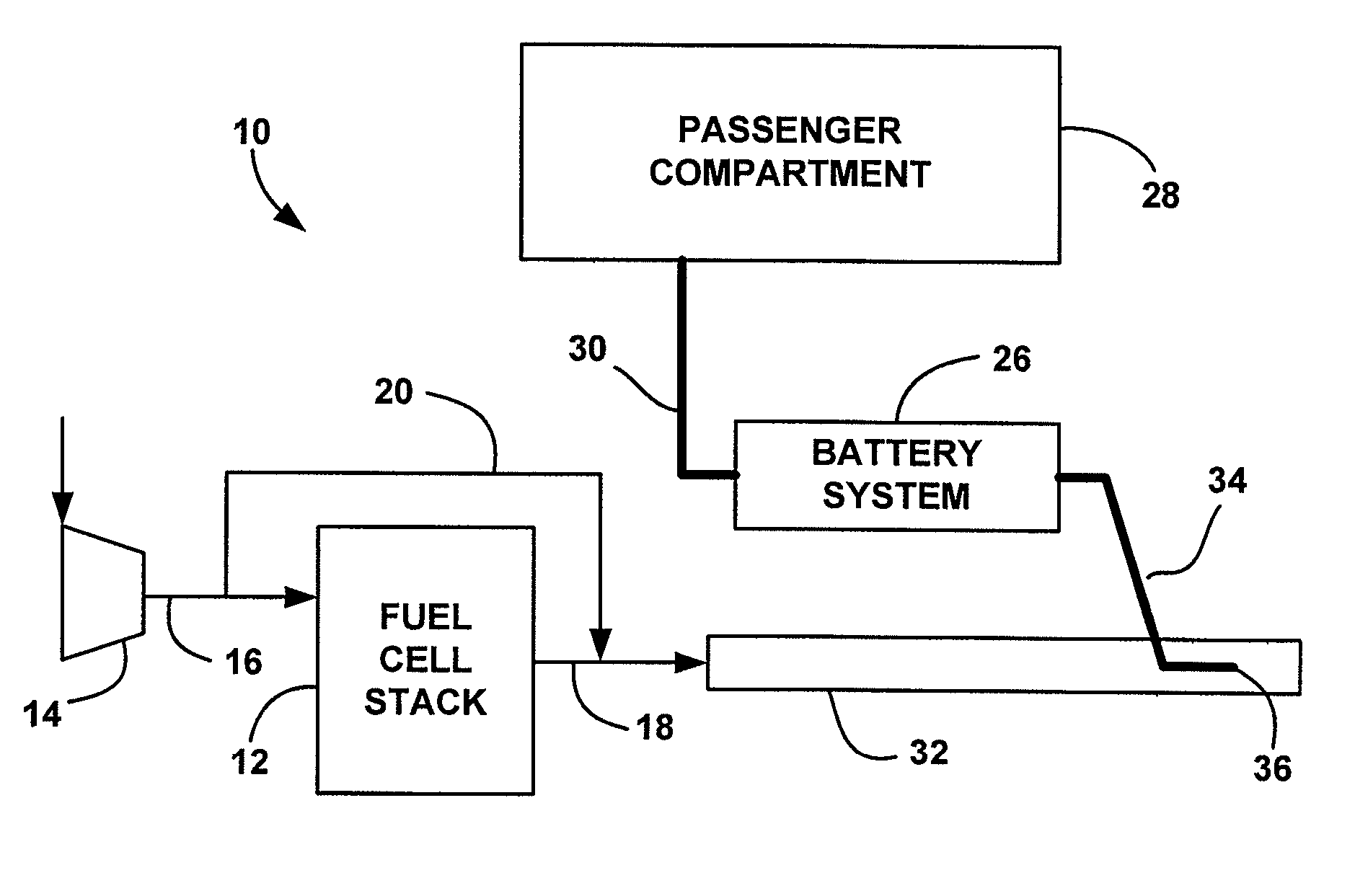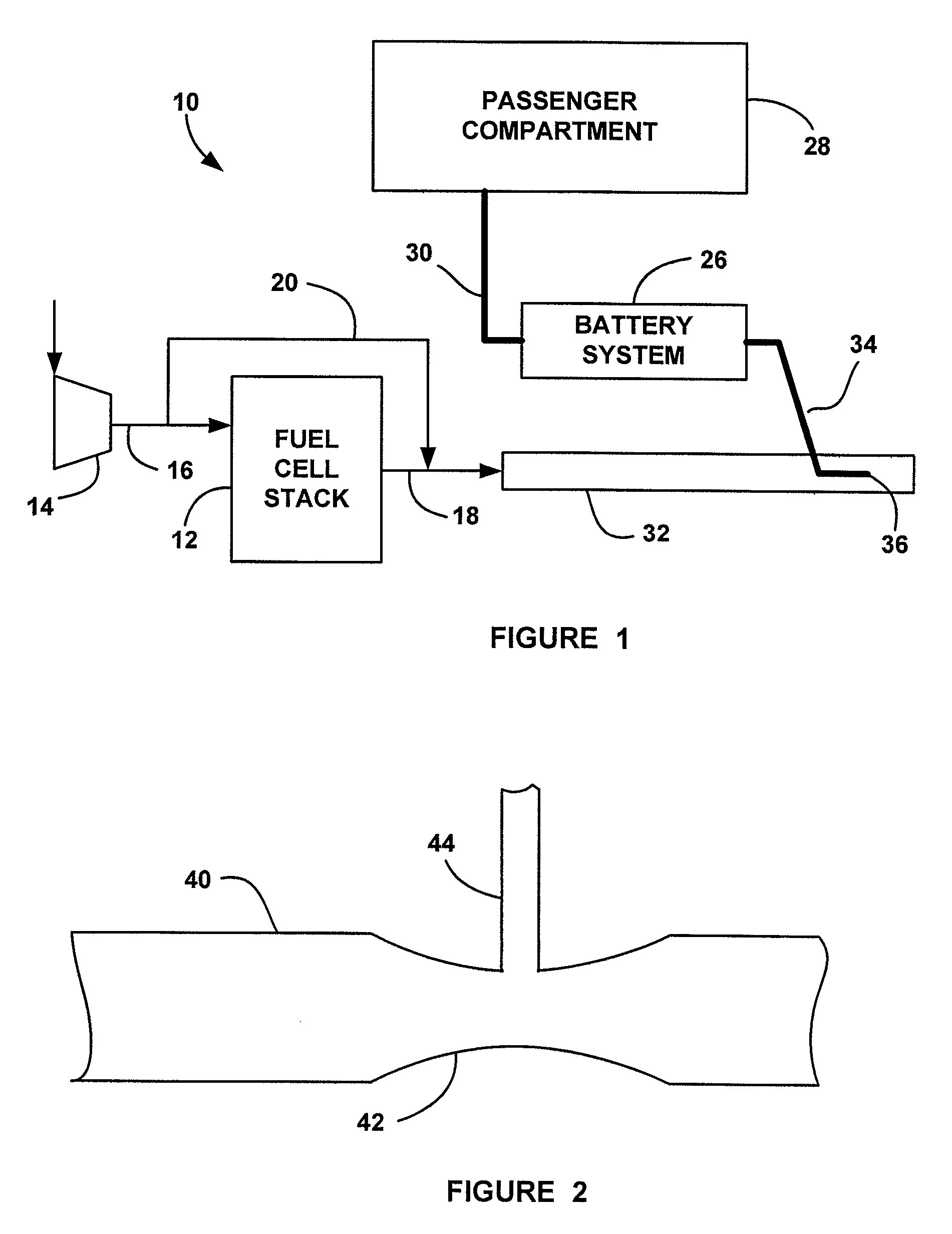HV battery cooling with exhaust flow of fuel cell systems
a fuel cell and battery technology, applied in the direction of electric propulsion mounting, electric generators, transportation and packaging, etc., can solve the problems of low fuel cell vehicle driveability, low efficiency of fuel cell vehicles, and relatively high manufacturing costs of meas
- Summary
- Abstract
- Description
- Claims
- Application Information
AI Technical Summary
Benefits of technology
Problems solved by technology
Method used
Image
Examples
Embodiment Construction
[0016]The following discussion of the embodiments of the invention directed to a fuel cell system for a hybrid vehicle that employs a technique for drawing cooling air from a passenger compartment of the vehicle through a battery sub-system using a cathode exhaust gas flow is merely exemplary in nature, and is no way intended to limit the invention or its applications or uses. For example, the present invention has particular application for a fuel cell hybrid vehicle. However, as will be appreciated by those skilled in the art, the cooling system of the invention may have other applications.
[0017]FIG. 1 is a schematic block diagram of a vehicle system 10 for a fuel cell hybrid vehicle. The system 10 includes a fuel cell stack 12 that receives a cathode input airflow from a compressor 14 on a cathode input line 16. The compressor 14 drives the cathode air through the fuel cell stack 12, and a cathode exhaust gas is output from the cathode side of the fuel cell stack 12 on output lin...
PUM
 Login to View More
Login to View More Abstract
Description
Claims
Application Information
 Login to View More
Login to View More - R&D
- Intellectual Property
- Life Sciences
- Materials
- Tech Scout
- Unparalleled Data Quality
- Higher Quality Content
- 60% Fewer Hallucinations
Browse by: Latest US Patents, China's latest patents, Technical Efficacy Thesaurus, Application Domain, Technology Topic, Popular Technical Reports.
© 2025 PatSnap. All rights reserved.Legal|Privacy policy|Modern Slavery Act Transparency Statement|Sitemap|About US| Contact US: help@patsnap.com


